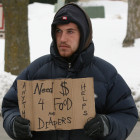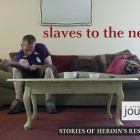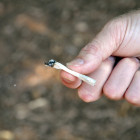Drugs in this country come in and out of style. Some of them leave the scene pretty quickly, thank goodness.
Then there are the ones that always seem to linger unwelcomed, sometimes quiet in the background, sometimes bursting into the open.
That’s heroin. Like a drunk at an otherwise pleasant gathering, it’s there around the fringes, making people uncomfortable. But then the party goes into a real funk when the drunk gets a mean on and proceeds to ruin everyone’s evening.
Heroin may be about to get a mean on. That’s what JJIE’s Ryan Schill writes in a three-part series this week. Though statistics don’t show an enormous surge in heroin arrests, both current and former users, as well as counselors report an upsurge in use among teens, mostly white, mostly suburban. Increased supply, its relative low cost and the prevalence of opiate-based prescription medications all play a role in what seems to be going on.
These aren’t happy stories Schill tells, and these aren’t pretty pictures photographer Clay Duda offers. So, you should know, this series may not be suitable for all readers. It is sometimes difficult to stomach. It is rife with profanity and disturbing details. Some of the images are graphic. But it is, quite simply, the brutal reality of a life with heroin.
For the most part, it’s a sad story. Yet even in this nightmarish place, there is some hope and in this case it is recovery. One character, hopeless in the shackles of heroin for years, found a way to claw his way to sobriety.
He offers something, not only to others still struggling with addiction, but to all of us. With the help of society, friends, family and loved ones, souls long thought to be lost, can be salvaged.





